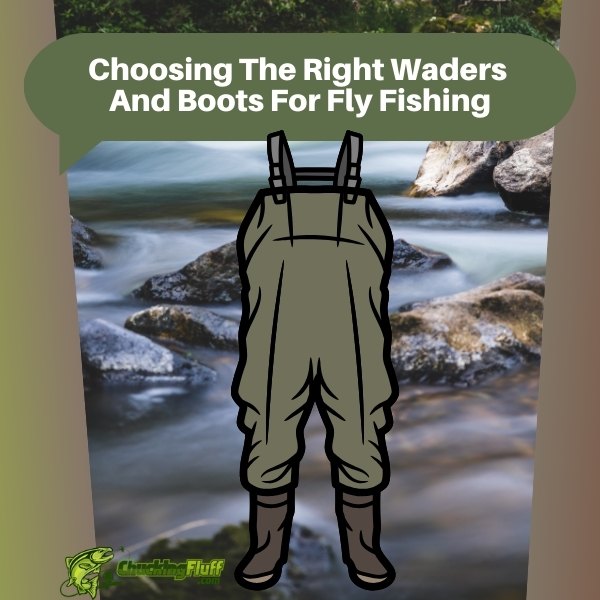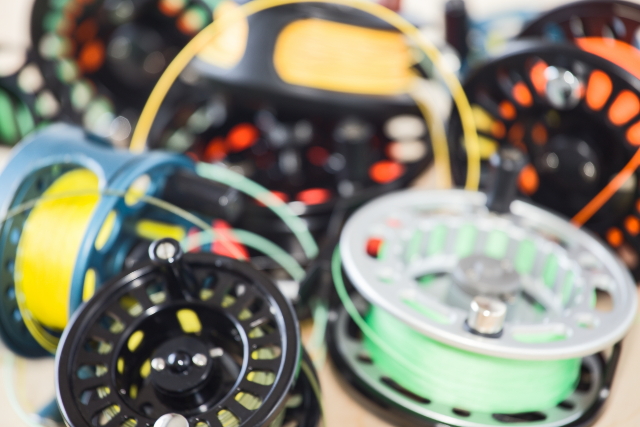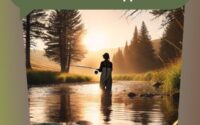| Disclosure: Just to be open and honest the buttons and links you click on in the website will in most cases take you to another website where you can purchase the products I am reviewing. As an Amazon Associate I earn from qualifying purchases. |
Choosing The Right Waders And Boots For Fly Fishing
Quick Post Navigation
- Why Waders and Boots Matter in Fly Fishing
- Types of Waders: Finding Your Perfect Match
- Wader Materials: What’s Best for You?
- Key Features to Look for in Waders
- Types of Fly Fishing Boots
- How to Choose the Right Wader and Boot Combination
- Sizing and Fit: Getting It Right
- Maintenance and Care for Longevity
- Budget vs. Premium Options: What’s Worth It?
- Common Mistakes to Avoid When Choosing Waders and Boots
- Conclusion
- FAQs
Imagine standing knee-deep in a pristine river, the sun glinting off the water, your fly rod poised for the perfect cast. The fish are biting, but there’s one problem: your feet are freezing, your waders are leaking, and you’re slipping on every mossy rock. Sound familiar? The right waders and boots can make or break your fly fishing adventure. They’re not just gear—they’re your shield against the elements and your ticket to staying comfortable and focused. So, how do you choose the perfect pair? Let’s dive into the world of waders and boots to find the best fit for your fly fishing needs.
Why Waders and Boots Matter in Fly Fishing
Fly fishing isn’t just about casting a line; it’s about immersing yourself in nature, battling the current, and outsmarting elusive trout. Your waders and boots are your first line of defense against cold water, sharp rocks, and unpredictable terrain. They keep you dry, warm, and stable, letting you focus on the art of the cast rather than soggy socks or a twisted ankle.
The Role of Waders in Comfort and Protection
Waders are like a second skin for fly fishers. They create a waterproof barrier between you and the water, whether you’re wading through a chilly mountain stream or a warm lowland river. Beyond keeping you dry, waders protect against scrapes, insect bites, and even the occasional brush with a grumpy snapping turtle. A good pair of waders also regulates your body temperature, ensuring you don’t overheat on a sunny day or shiver through a winter fishing trip.
How Boots Enhance Your Fishing Experience
If waders are your armor, boots are your trusty steed. Fly fishing boots provide the traction you need to navigate slick riverbeds, muddy banks, and rocky shores. They support your ankles during long hours on uneven terrain and work in tandem with your waders to keep water out. The right boots can mean the difference between confidently stalking a trophy fish and doing an unplanned backflip into the river.
Types of Waders: Finding Your Perfect Match
Not all waders are created equal. Depending on where and how you fish, one style might suit you better than another. Let’s break down the three main types of waders and what makes each one shine.
Chest Waders: Maximum Coverage for Deep Waters
Chest waders are the go-to choice for anglers who fish in deep rivers or lakes. Extending up to your chest, these waders offer maximum protection against water, especially when you’re wading waist-deep or navigating strong currents. They’re ideal for cold weather, as they cover more of your body and pair well with insulating layers. However, they can feel bulky for some anglers, especially in warmer climates or shallow streams.
Waist-High Waders: Flexibility for Warmer Days
Waist-high waders, or pant waders, stop at your waist, offering a lighter, more flexible option. They’re perfect for warm-weather fishing or when you’re wading in shallower waters. These waders give you more freedom of movement, making them great for active anglers who hike between fishing spots. The trade-off? Less protection in deep water or cold conditions.
Hip Waders: Lightweight Option for Shallow Streams
Hip waders are the most compact option, covering only up to your upper thighs. They’re ideal for small streams, creeks, or situations where you’re not wading deep. Lightweight and easy to pack, hip waders are a favorite for anglers on the move or those fishing in warm climates. However, they’re not suited for deep water, and you’ll need to be cautious about water spilling over the top.
Wader Materials: What’s Best for You?
The material of your waders affects everything from comfort to durability. Each type has its strengths, so let’s explore the options to find what works for your fishing style.
Breathable Waders: Staying Cool and Dry
Breathable waders, made from fabrics like Gore-Tex, are the gold standard for most fly fishers. These waders allow moisture from sweat to escape while keeping river water out, making them ideal for long days on the water or warm weather. They’re lightweight and comfortable but may require extra layers for cold conditions. Look for high-quality brands to ensure durability, as cheaper breathable waders can wear out quickly.
Neoprene Waders: Warmth for Cold Conditions
Neoprene waders are like a wetsuit for fishing. Thick and insulating, they’re perfect for cold-weather fishing in icy rivers or early spring outings. Neoprene provides excellent warmth but isn’t as breathable, so you might feel sweaty during intense activity or warm days. They’re also heavier, which can be a drawback for long treks.
PVC Waders: Budget-Friendly Durability
PVC waders are the budget-conscious angler’s choice. They’re tough, waterproof, and affordable, making them great for beginners or occasional fishers. However, they lack breathability, so they can feel clammy during extended use. They’re also less flexible, which might limit mobility. If you’re just starting out and don’t want to break the bank, PVC waders are a solid entry point.
Key Features to Look for in Waders
Not all waders are built the same. Beyond type and material, certain features can elevate your fishing experience. Here’s what to keep an eye on.
Seam Construction and Waterproofing
A wader’s seams are its Achilles’ heel. Poorly sealed seams can lead to leaks, turning your fishing trip into a soggy disaster. Look for waders with sealed or taped seams, preferably double-stitched for extra durability. High-end models often use advanced welding techniques for a watertight seal. Check the manufacturer’s waterproof rating to ensure your waders can handle the conditions you’ll face.
Fit and Sizing for Comfort
Waders that are too tight restrict movement, while oversized ones can bunch up and cause leaks. Most brands offer detailed sizing charts, so measure your chest, waist, inseam, and shoe size carefully. Adjustable suspenders and belts help fine-tune the fit. Try waders on with your fishing layers to ensure they’re comfortable when fully geared up.
Additional Features: Pockets, Suspenders, and More
Modern waders come with bells and whistles that add convenience. Look for waders with plenty of pockets for storing tools, flies, or snacks. Some models include handwarmer pockets for chilly days. Adjustable suspenders and quick-release buckles make getting in and out a breeze. Built-in gravel guards or booties keep debris out, ensuring a snug fit with your boots.
Types of Fly Fishing Boots
Your boots are just as crucial as your waders. The right sole and design can keep you steady on slippery rocks or muddy banks. Here’s a look at the main types of fly fishing boots.
Rubber Sole Boots: Versatile Traction
Rubber sole boots are the all-purpose workhorses of fly fishing. They provide decent traction on a variety of surfaces, from gravel to grass. Many modern rubber soles are designed with aggressive lugs for better grip, and some allow you to add studs for extra traction. These boots are easy to clean and legal in areas where felt soles are banned due to environmental concerns.
Felt Sole Boots: Superior Grip on Slippery Surfaces
Felt sole boots are the gold standard for slippery, algae-covered rocks. The soft, grippy material clings to wet surfaces like Velcro, giving you confidence in fast-moving rivers. However, felt soles can be less durable and harder to clean, and some regions restrict them to prevent the spread of invasive species. If you fish in slick conditions, felt soles are hard to beat.
Studded Boots: Extra Traction for Tough Terrains
For the toughest conditions—think rocky riverbeds or steep, muddy banks—studded boots are a game-changer. These boots combine rubber or felt soles with metal studs or cleats for maximum grip. They’re ideal for anglers who fish in rugged environments but can be overkill for calm, shallow streams. Be aware that studs can damage boats or delicate surfaces, so choose wisely.
How to Choose the Right Wader and Boot Combination
Pairing your waders and boots is like choosing the perfect wine and cheese combo—it’s all about balance. The right combination depends on your fishing environment and personal preferences.
Matching Waders and Boots for Optimal Performance
Your boots should integrate seamlessly with your waders. If you’re using stockingfoot waders (with built-in neoprene booties), choose boots one size larger than your street shoes to accommodate the booties. Bootfoot waders, which have built-in boots, eliminate the need for separate footwear but offer less flexibility. Ensure your boots have ankle support and pair well with your waders’ material and style.
Considering Water Conditions and Seasons
Think about where and when you fish. Cold, deep rivers call for chest-high neoprene waders and felt or studded boots for grip. Warm, shallow streams pair well with breathable waist waders and rubber sole boots. If you fish year-round, consider investing in two sets of gear—one for warm seasons and one for cold—to maximize comfort and performance.
Sizing and Fit: Getting It Right
A perfect fit is non-negotiable. Ill-fitting gear can lead to discomfort, leaks, or even injury. Here’s how to nail the sizing for both waders and boots.
Measuring for Waders
Start by measuring your chest, waist, inseam, and shoe size. Compare these to the manufacturer’s sizing chart, as sizes vary between brands. If you’re between sizes, go up to accommodate layers like fleece or insulated pants. Try waders on with your fishing clothes to ensure they’re not too tight or baggy. Adjustable straps and belts can help dial in the fit.
Finding the Perfect Boot Fit
For stockingfoot waders, choose boots one size larger than your regular shoes to fit the neoprene booties comfortably. Ensure the boots aren’t too tight, as this can restrict circulation during long days on the water. Lace-up boots offer a customizable fit, while pull-on styles are convenient but less adjustable. Walk around in your boots to confirm they provide support without pinching.
Maintenance and Care for Longevity
Your waders and boots are an investment, so treat them right to make them last. Proper care can extend their lifespan and keep them performing at their best.
Cleaning and Storing Waders
After each trip, rinse your waders with fresh water to remove dirt, algae, and salt. Avoid harsh detergents, as they can damage waterproof coatings. Dry waders inside and out, but keep them away from direct heat or sunlight, which can degrade materials. Store them hanging in a cool, dry place to prevent creases or mold. Patch small leaks with wader repair kits for quick fixes.
Maintaining Your Fishing Boots
Rinse boots thoroughly after use to remove mud and debris. For felt soles, scrub gently with a soft brush to prevent buildup. Dry boots completely before storing to avoid mold or odor. Check soles for wear and replace them if traction starts to fade. Store boots in a well-ventilated area, and avoid leaving them in damp environments like car trunks.
Budget vs. Premium Options: What’s Worth It?
Waders and boots come in a wide range of price points. Should you splurge on top-tier gear or stick with budget-friendly options? Let’s weigh the pros and cons.
Affordable Waders and Boots for Beginners
If you’re new to fly fishing or fish infrequently, budget waders and boots can get you started without breaking the bank. PVC waders and basic rubber sole boots are affordable and functional for casual use. They may not have the durability or comfort of premium gear, but they’re a great way to test the waters (pun intended) before investing more.
Investing in High-End Gear for Serious Anglers
For frequent fishers or those tackling tough conditions, premium waders and boots are worth the investment. Breathable waders with advanced waterproofing and studded boots with superior traction offer unmatched performance and longevity. High-end gear often includes warranties and better customer support, saving you money in the long run.
Common Mistakes to Avoid When Choosing Waders and Boots
Even seasoned anglers can make missteps when buying gear. Avoid these common pitfalls to ensure you get the most out of your purchase:
- Ignoring Fit: Buying waders or boots without checking sizing charts or trying them on can lead to discomfort or leaks.
- Skimping on Quality: Cheap gear might save money upfront but often wears out quickly, costing more over time.
- Choosing the Wrong Sole: Using felt soles in areas where they’re banned or rubber soles on slick rocks can compromise safety.
- Neglecting Maintenance: Failing to clean or store gear properly can shorten its lifespan.
- Overlooking Conditions: Picking waders and boots that don’t match your fishing environment can leave you cold, wet, or unstable.
Conclusion
Choosing the right waders and boots for fly fishing is about understanding your needs, environment, and budget. Whether you’re wading through icy rivers or casting in warm streams, the perfect gear keeps you comfortable, safe, and focused on the fish. Start by assessing the water conditions and seasons you’ll face, then choose waders and boots that offer the right balance of protection, traction, and fit. Invest in quality where it counts, maintain your gear, and avoid common mistakes to ensure years of successful fishing trips. Now, grab your rod, slip into your waders, and hit the water with confidence!
FAQs
1. What’s the difference between stockingfoot and bootfoot waders?
Stockingfoot waders have built-in neoprene booties, requiring separate boots, offering better fit and flexibility. Bootfoot waders have integrated boots, which are convenient but less customizable.
2. Are felt sole boots worth it for fly fishing?
Felt sole boots excel on slippery rocks but may be banned in some areas due to environmental concerns. They’re ideal for slick rivers but less versatile than rubber soles.
3. How do I know if my waders are leaking?
Fill your waders with water (inside a tub) or spray them with a hose to check for leaks. Small leaks can often be patched with repair kits.
4. Can I use hiking boots instead of fly fishing boots?
Hiking boots aren’t ideal, as they lack the traction and waterproofing needed for wet, slippery riverbeds. Fly fishing boots are designed for specific fishing conditions.
5. How often should I replace my waders and boots?
With proper care, quality waders and boots can last 3-5 years or more. Replace them when seams leak, soles wear out, or materials degrade significantly.



